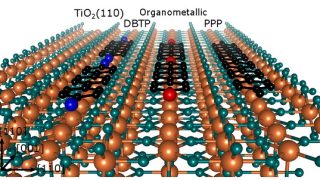
Investigating the fundamental stages of the CO oxidation reaction using a kinked Pt crystal
Carbon monoxide (CO) oxidation (2CO + O2 → CO2) on platinum (Pt) group metal surfaces is the model heterogeneous gas/surface catalytic reaction. Pt itself is of the upmost importance as a catalyst for car exhaust cleaning or for the water gas shift reaction, whereas Pt crystal surfaces are model systems for investigating the catalytic CO […]








